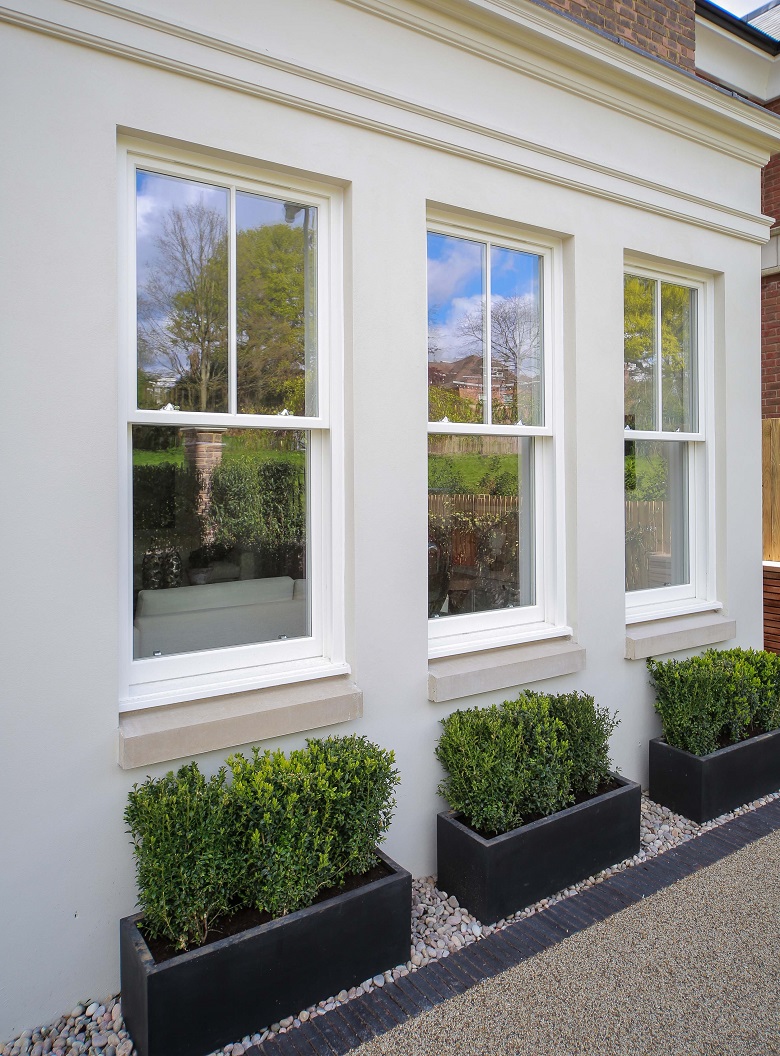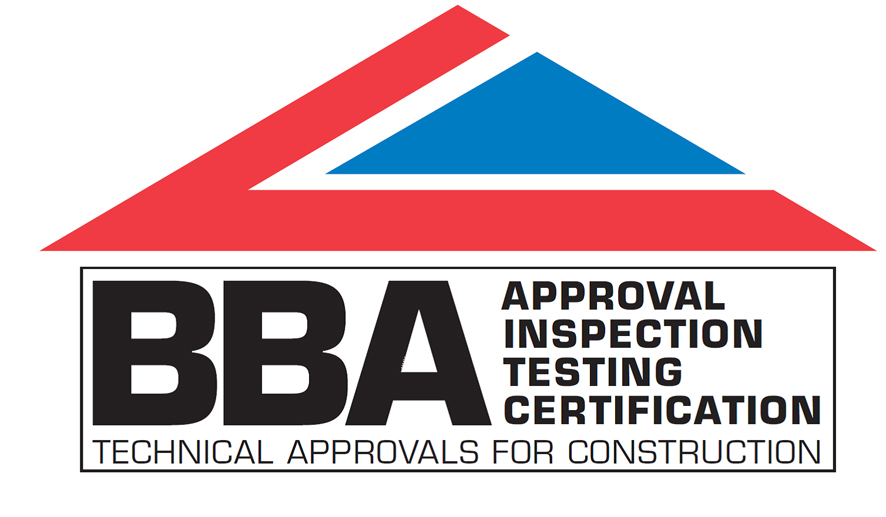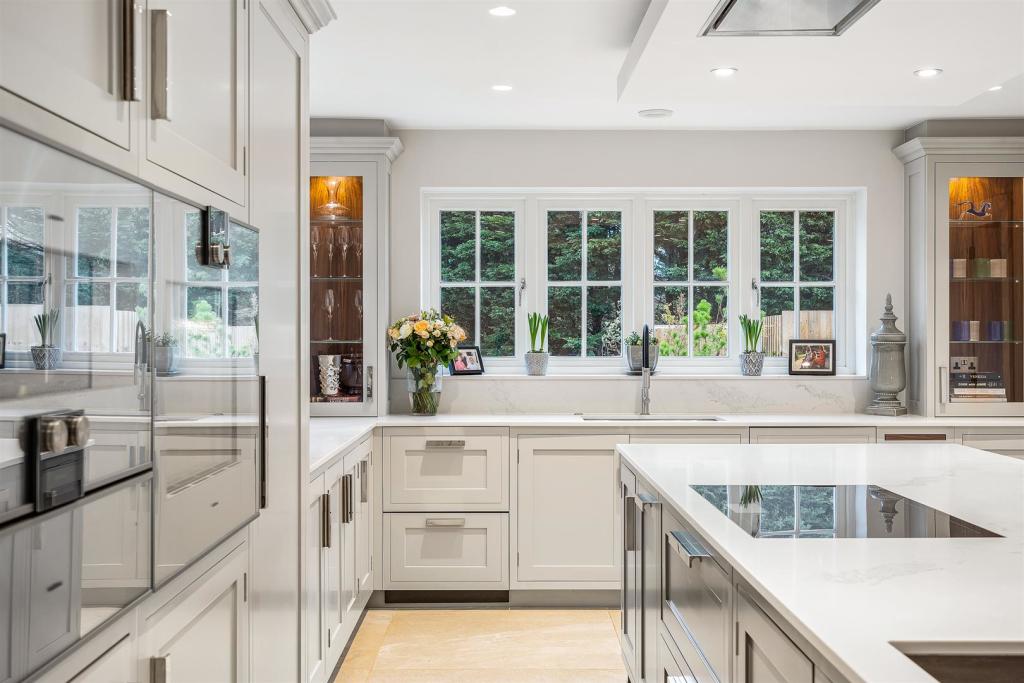Best U-Values for Timber Windows
Posted: 09 November 2023

We all need to think about energy efficiency to play our part in the global battle against climate change and reduce our monthly energy bills in the face of constantly increasing prices.
Fitting energy-efficient windows has a massive effect on your home. They allow you and your family to live in warmth and comfort all year round with no icy draughts in the depths of winter. When a window is well insulated, it also reduces the amount of noise coming in from outside.
But how can you tell whether windows are energy efficient, and what impact do your windows have on the overall energy efficiency of your home? We will set out to answer these questions.
U-Value for Windows
The energy efficiency of windows can be scientifically calculated and expressed by thermal transmittance. This is the heat transfer rate through a structure divided by the difference in temperature across the structure. It is a straightforward calculation, and the result, measured in W/m²K, is known as the U-value. A lower U-value means a more energy-efficient window.
The Part L updated Building Regulations came into force in June 2022. It is all about energy conservation and stipulates maximum U-values for windows in new builds and replacement windows in existing properties.
We pay close attention to building regulations, and ensure every project is in compliance. But realistically, these are minimum requirements. We take energy efficiency seriously and aim to set benchmarks that exceed the minimum standards set out in building regs.
Understanding Your Current U-Value
There is no easy way to measure your windows’ thermal efficiency in the way you can measure their dimensions. But you can get some good clues just by looking at them. At the most basic level, it is worth noting that the thermal efficiency of windows has improved dramatically over the years.
For example, if you have an older property with single-glazed windows, the U-value is likely between five and six. Of course, many properties had those windows replaced 40 or more years ago when double glazing became popular in the UK. Windows with the 1980s double glazing that everyone was talking about at the time are likely to have a U-value between 2.5 and 3.0.
These numbers all look quite inefficient when comparing them with the new Building Regulations for 2024, which talk about U-values of at most 1.4 or 1.6, depending on the circumstances.
Lomax + Wood – Proud to be Setting The Bar
Lomax + Wood is proud to be the first manufacturer to achieve a U-value of 1.1 W/m²K for sash windows. We achieved it almost 10 years ago with the Kensington & Chelsea timber sliding sash window. It’s a testament to our designers' hard work and dedication that a decade on, regulators and other manufacturers are looking at 1.2 W/m²K as a benchmark for excellent thermal efficiency.
It also highlights an interesting point: different styles of windows – sash, casement, tilt and turn and so on – have different U-values. This is because thermal efficiency is not only dictated by the glass but also by the design and thickness of the frame and how the windows open. With that in mind, let’s look at the different types.
Sash Windows – Optimum U-Values
Customers are often wary of sash windows because they associate them with being loose-fitting and draughty. But that is usually because they think about windows that have been in place for 100 years or more.
The truth is that modern sash windows are incredibly efficient – and as we just mentioned, the ones made by Lomax + Wood set the benchmark to which other manufacturers have been aspiring for years.
How do we go about attaining these low U-values? The materials are important – Lomax + Wood uses double-glazed panes filled with Argon and multi-layered engineered timber from sustainable sources. But just as important is the design and method of construction. For example, using deep inside to outside profiles improves the window’s insulating properties through the wood components.

Casement Windows Exceed The 2024 Benchmark
You can’t beat casement windows for versatility. You will see them in period cottages dating back centuries to contemporary new builds and everything in between. Casements have both fixed and opening panes, and with older or poor-quality windows, the hinged panes can be sources of draughts, even when closed.
That’s not something you need to worry about when you choose casement windows from Lomax + Wood. Our Kensington and Chelsea casements achieve a U-value measurement of 1.2 W/m²K. That comfortably exceeds the 1.4 W/m²K benchmark mentioned in the 2024 Building Regulations.
French Doors Can be Energy Efficient, Too
Wooden French doors add style and elegance to a property, regardless of age or design. Customers who are concerned about energy efficiency sometimes worry that they will let in cold air during the winter.
At Lomax + Wood, we create wooden French doors with a traditional design but use 21st-century insulation methods to deliver a U-value of 1.4 W/m²K. That is on par with the most efficient windows and exceeds all expectations for doors. The double-glazed glass is Argon-filled, and all glazing is internally and externally sealed with silicon for enhanced thermal efficiency.
Aluminium Cladding Adds Contemporary Style and Functionality
For a more contemporary external appearance, timber windows with aluminium cladding provide the best of both modern and traditional. They provide all the benefits of engineered pine wood windows in terms of thermal performance, style, and durability. But they also deliver enhanced weather resistance and 21st-century style with a protective layer of aluminium on the outside.
As well as helping protect the wood from being battered day in and day out by the elements, aluminium provides an extra level of insulation, helping to reduce that U-value even more, whatever window design you go for.
Always Striving to Improve Our Standards
Across the range, from sash windows to French doors, we are proud to say that all our products are best in class when it comes to U-values. However, our in-house designers never rest on their laurels. They continue striving for even better performance and reduced U-values across our full range of products.
All the windows and doors that we produce are designed in-house and factory double-glazed, with an elegant 20mm wide ovolo glazing bar. They are internally glazed for improved aesthetics, security, and easier maintenance and fully weather-stripped for greater thermal and acoustic performance. All products are supplied with three coats of factory-finished, spray-applied micro-porous paint and CE marked.
Verifying Our Performance

All measurements have been tested using the new British Board of Agrément (BBA) software tool in compliance with BS EN ISO 10077-1:2006. The British Woodworking Federation has tested this to bring its basic U-value calculation service in line with the Construction Products Regulation (CPR).
Contributing to Overall Efficiency and Comfort All Year Round
A building's energy efficiency will be directly correlated to the U-values installed at that building, whether it be a residential or commercial property. When windows have lower U-values, it means the building will have a lower rate of heat loss in the winter and a lower level of heat gain during the summer months. This reduces the amount of energy needed to keep the rooms of the building at a comfortable temperature. Energy consumption is reduced, cutting costs and reducing the building’s carbon footprint.
Those are good enough reasons alone to pay close attention to U-values. But there is more. Excessive use of heating and cooling, such as via radiators, electric heaters, fans, air conditioning units, etc., doesn’t just use energy. It also affects humidity and can lead to cold spots and issues with dampness and condensation. Low U-values provide natural thermal insulation that provides a more comfortable indoor environment.
While the changes to Part L identify an overall U-value for a building dramatically reduced from Part L 2010, specifiers and developers can use a flexible approach if the minimum U-value requirements for the individual parts are met. In effect, this means combining different energy-efficient techniques into modelling software to assess the overall and collective result.
Offsetting Less Efficient Aspects
We mentioned earlier that Building Regulations get steadily more demanding when it comes to questions of sustainability and environmental impact. Contractors working on projects large and small have more than half an eye on the new regulations that will come into force in April 2024, and most are looking to achieve compliance ahead of time.
Developers are permitted to use a flexible approach. As long as no maximum U-values are exceeded for specific components, it is okay to offset more energy-efficient components against poorer performers.
With our windows performing outstandingly well, their very low U-values are a welcome addition to aesthetically pleasing windows. They can help offset other materials and systems that are not performing so well.

U-values – Standard Values for Windows and More
If you are setting out on a building project, you will be presented with a long list of building regulations covering various topics. This will include specific U-values relating to different components. These vary depending on local rules, the type of building, its proposed use and various other factors.
You might want some general guidelines to assess the energy efficiency of existing buildings or to make improvements to what you have. Subject to the above caveats, here are some broad recommendations relating to U-values:
- Walls: External walls should have maximum U-values of 0.18 W/m²K. Internal walls should aim for 0.3 W/m²K or below.
- Roofs: U-values for roofs should be no more than 0.15 W/m²K, especially in colder regions. Loft insulation has a fundamental impact here.
- Windows: As we have seen, U-values can vary drastically depending on the glazing, window type and age. As a comprehensive guideline, 1.4 W/m²K is considered to be efficient.
- Doors: A well-insulated door will have a maximum U-value of 1.4 W/m²K. As always, the lower the value, the better.
Remember, these values are just a starting point to provide guidance. If you have a specific project in mind, you must check local requirements and energy performance targets.
Improving the U-value of Windows and Doors
If the U-values of your windows and doors are higher than they should be, your home will likely be using excess energy and creating a larger carbon footprint. Improving the U-value of windows and doors will make the home more comfortable, mitigating issues like draughts and condensation, reducing energy costs and improving the building’s green credentials.
The most obvious and effective way to achieve that is to replace windows and doors with new ones with a lower U-value. That is only sometimes possible or viable, especially in a large house with many windows and doors. Other strategies can be adopted, at least as interim measures, until a permanent solution can be implemented:
- Apply low-film to windows – Low-E stands for low-emissivity. Modern glass is manufactured with low-E coatings embedded. That can’t be done retrospectively, but you can add low-E film to an older window to reduce its U-value.
- Inject double glazing with inert gas – old double-glazed windows can leak – an engineer can inject Argon into the gap and caulk the leak, although this is not a long-term solution, and the windows will need replacement sooner or later.
- Seal gaps - weather strips can help to reduce air leaks to a certain extent, but they are functional rather than beautiful.
- Use thermal curtains or blinds – this makes a room more cosy in winter, but if the window or door leaks severely, it only masks the problem and is a very short-term solution.
- Check the fit – ensure that windows and doors fit snugly. Adjust fixings and hinges as necessary and use sealing products to fill gaps and eliminate draughts.
- Ensure that windows and doors are well-maintained, promptly addressing any gaps, cracks, or failed seals.
Adding storm doors and windows can provide an additional barrier against the elements and improve insulation. The same applies to external installations like awnings. However, replacing windows or doors with new ones with superior U-values will likely deliver better results for similar money.
It is also worth mentioning that proper installation by a professional is strongly recommended in order for doors and windows to perform at their optimal thermal efficiency.
Common FAQs in Relation to U-Values for Timber Windows
What is a Good U-Value for a Timber Window?
That depends on the type of window frame and glazing. A modern wood framed window with double glazing should have a U-value of 1.6 W/m²K or less, but in short, the lower the number, the better.
What is The U-Value of Double Glazing in The UK?
Modern double glazing has a U-value of 1.6 W/m²K or less. However, older double glazing is likely to have a higher U-value and could be above 3.
What is The Difference Between The U-Value and R-Value?
The U-value quantifies heat transfer through a material or assembly, while the R-value represents the thermal resistance of a specific material. Materials with R-values that are higher will provide better insulation to properties and give them lower rates of heat transfer. R-values are commonly used to evaluate the effectiveness of insulation materials.
How Does Insulation Impact U-Value?
In short, fundamentally. Insulation plays a pivotal role in improving U-values and overall energy efficiency within your home or commercial property. Insulation reduces heat transfer through building components like walls, roofs and floors. Effectively insulating walls, roofs, and floors significantly improves U-values.
What is The Minimum U-Value For Windows in The UK?
The 2024 revision to Part L of the Building Regulations states that replacement windows cannot perform inferiorly to the element they replace. Furthermore, they state all windows and doors must achieve a U-value of 1.4.
As part of the future homes standard, regulations are due to change again in 2025 with U-values expected to be reduced further with a reduction of carbon emissions on new builds of 75-80% over current regs.


















